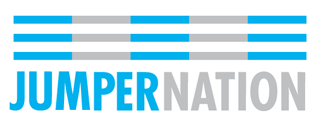This article originally appeared on Eventing Nation.
In an effort to compile as much information concerning the European EHV-1 outbreak and the crop of cases scattered about the U.S., we’ll be continuously updating this post with new cases, updates from the FEI and USEF, and biosecurity measures that have been implemented at events around the country. We’ll make every effort to keep tabs on this important information but can always use help; please email tips@eventingnation.com with any verified information that we may have missed.
While there has not been a mass lockdown at most facilities that have seen cases, we encourage all owners to carefully consider their horses’ movements. EHV-1 is a highly transmissible and aggressive virus, and the incubation period of anywhere from 2 to 10 days means a traveling horse may be a carrier, unbeknownst to the owner.
CURRENT CASES:
The Equine Disease Communication Center is providing updates on reported cases on a regular basis. You will need to select the form of EHV you want to search for in order to run the locator. At this time, there has been no connection made to the outbreak stemming from Spain that has shut down FEI competitions in Europe.
On March 11, new cases have been reported in New York and Kentucky.
On March 10, a new case with 45 potential exposures was reported in Los Angeles, Ca. Previous reported cases are from the states of Florida, Maryland, Pennsylvania, Ontario, and Quebec.
FEI AND USEF UPDATES:
The latest timeline updates and figures from the FEI can be found here. As of March 11, there have been 12 confirmed deaths from EHV-1 in Europe. Meanwhile, horses are set to begin leaving the venue in Valencia, where they have been quarantined since February.
US Equestrian held an informational webinar on March 5 to educate members on the EHV-1 virus and biosecurity precautions to take. It can be viewed here.
A previous US Equestrian press release outlines biosecurity measures horse owners and riders can take. You can view the release here.
OTHER EVENTING NATION LINKS:
French Equestrian Federation Suspends All Competition in Response to EHV Outbreak
FEI Cancels All Competition on European Mainland Through 3/28 Due to EHV-1 Outbreak
Updates on EHV-1 European Outbreak + One Case Reported in Ocala
Update on Venturing Hills Farm EHV-1 Outbreak & How You Can Help
EHV-1 Death Reported at New Bolton in Chester County, PA [Updated March 6]
EHV-1 Updates: Ocala Has Two Confirmed Cases, FEI Continues to Monitor European Outbreak

